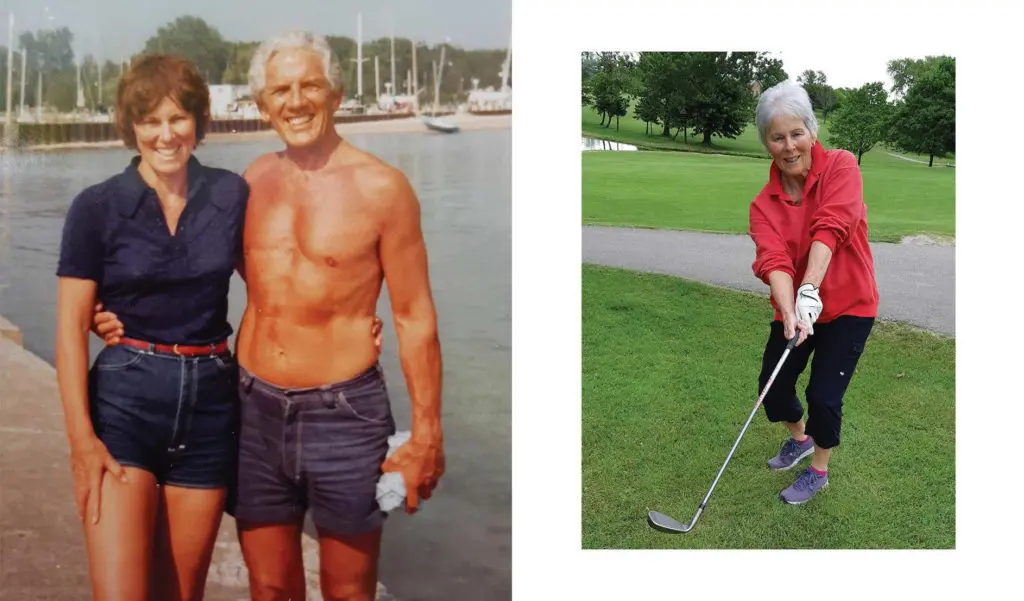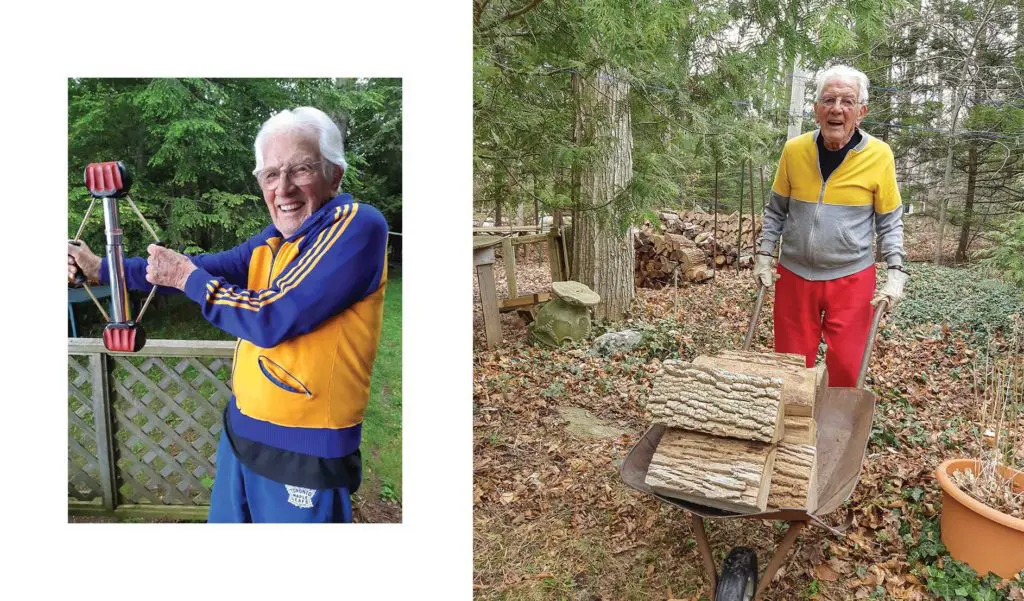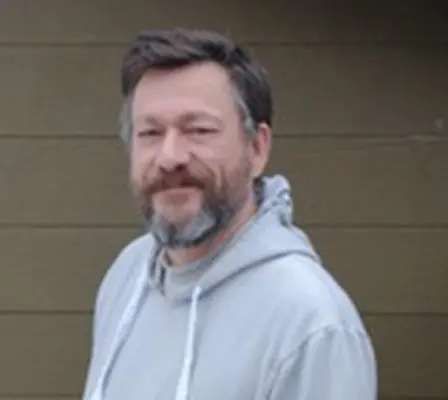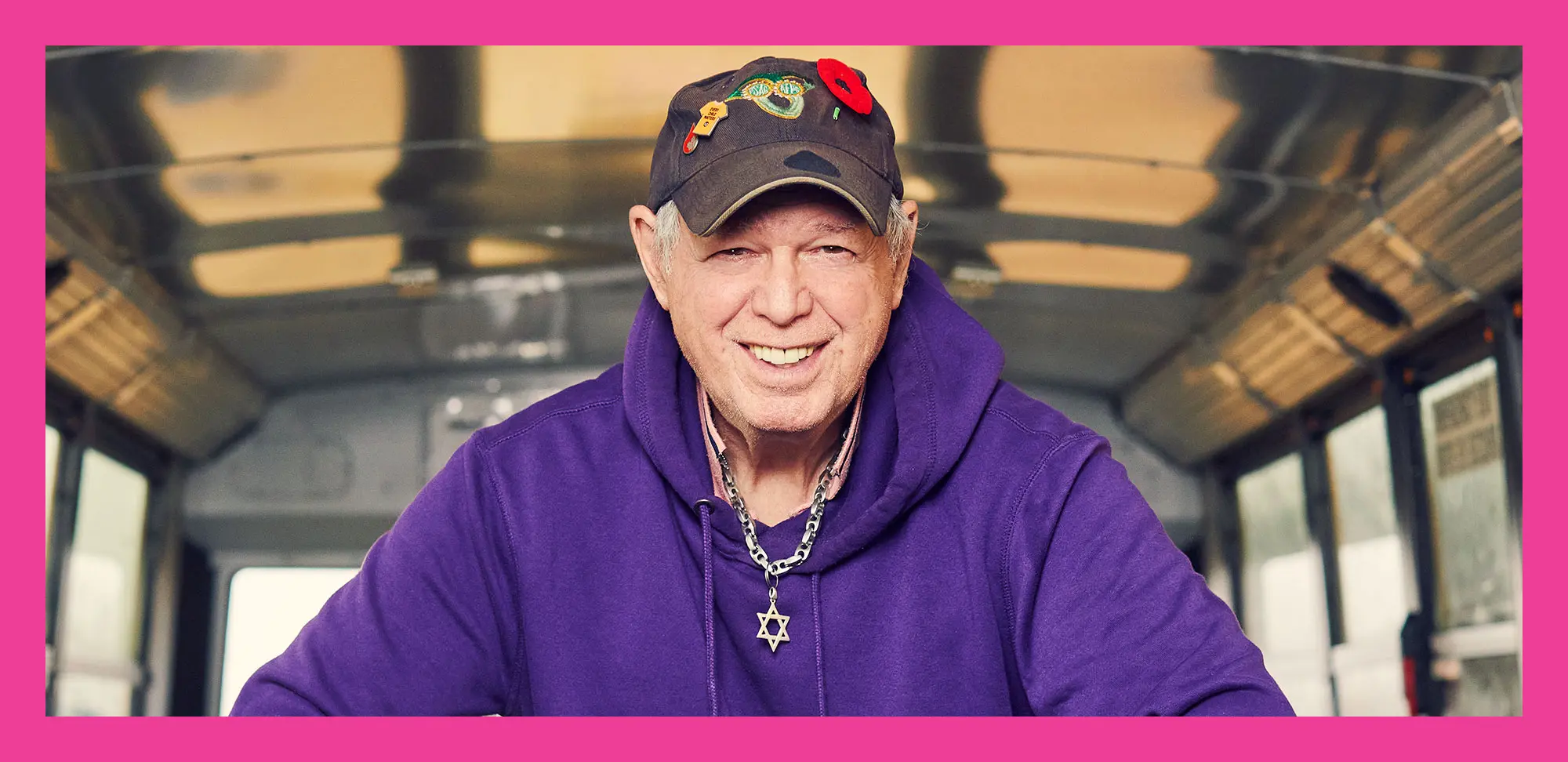Joyce Hetherington (District 8 London, Middlesex)
“Tom turned 100 on May 31 this year. His fundraiser — he’s going to walk 100 kilometres to raise money for homeless veterans — started, I think, with him needing a goal or a purpose in turning 100, and because he’s a World War II veteran himself. The Legions in London are very active in finding these men — it is mostly men — who, after discharge from the military, become lost. Tom can identify with that. In 1946, when he was only 25, he’d spent six years flying a Spitfire, when most kids are finding out what they want to do in life. All he knew was moving around, and he found it difficult to settle down. He was fortunate to come to Canada, and that people recognized in him the personal skills that eventually took him to teachers’ college.”
Tom Hennessy (District 8 London, Middlesex)
“Very simply, I’m going to be walking. Two guys from the Legion are looking after all the fundraising details; my contribution is just to walk. I wanted to raise money for homeless veterans after reading an article in the Legion magazine, and an editorial that said we’ve got to go all out and help the homeless. I can’t dive from a great height or do some incredible feat, but I can walk. When somebody 100 years old staggers around for 100 kilometres, I guess that’s impressive. Maybe I’ll do a bit more.
“It won’t be all at once, though. I can do eight to 10 kilometres a day, and I find I can do about two kilometres in three-quarters of an hour. I’m getting a bit faster each time I do it.
“I enlisted in 1941 — wasn’t yet 20. I started flight training in Oklahoma and returned to England for Spitfire training. We flew escorts on the north-Atlantic run; later I was assigned to southern England to intercept German aircraft bombing British cities. My squadron moved to Sicily and Italy; we flew support missions for Yugoslavia’s Marshal Tito. I was posted to Suez to train other pilots … in 1945 I was ordered to prepare for the Singapore invasion from India, but it was cancelled — the bombs were dropped on Hiroshima and Nagasaki.

“I was very lucky. There were a lot of Spitfire pilots who didn’t make it. I was always on the move during the war. After six years of that, I was demobilized and I had a job in London. But I just couldn’t settle. I saw a sign one day that said ‘Come to Ontario.’ I walked in off the street and signed up, and I was on the move again.
“Work was a challenge because there wasn’t much call for fighter pilots after the war. I did odd jobs in Toronto for a while. I drove a truck for Eaton’s. I worked in a bank for a year. At that time, I was renting a room on Nealon Avenue from a couple whose son was in Grade 6. I got along well with him, and one day his mother asked if I’d ever thought about teaching.
I hadn’t. I hadn’t really thought about doing anything in particular. But the teachers’ college was in the next block, near Pape Avenue. To cut a long story short, I got in.
“I was teaching in Cabbagetown when a notice came around that a new school would be opening, and one of the positions was for a phys ed teacher. I put in an application, but I didn’t have any of the qualifications, so I forgot about it. I was caught completely off guard when I got the job on the condition that I take summer courses in physical education.
“A few years before I started teaching, phys ed was still called PT, for ‘physical training.’ It was all army-style calisthenics and relay games — four kids are moving and 34 are doing nothing. It always bothered me. Too many kids standing around and not enough activity.
“In elementary grades, if you’re using sponge balls or beanbags or whatever, you need one for every child. Then all the kids are active all of the time. And you give them a challenge. As a simple example, it could be ‘Move the ball around the room. Now make it touch the ground. How many times can you make it bounce? Count how many times you can make it bounce in 30 seconds.’ One kid can bounce it three times, one can do it five, one can do it 20. They’re all challenging themselves.
“The basic goal with young children is to have them enjoy moving. The little ones couldn’t care less about the score. They want to get a ball; they want to get a rope; they want to be jumping. Get them comfortable with a ball: handling it, pushing it, kicking it, throwing it. And then as they get better, they can try to hit a mark on the wall. Asking kids to see how many times they can hit a mark on the wall challenges every kid.”
J.H.
“I always wanted to be a phys ed teacher — I met Tom through work and was his boss for a while! I was never a terribly good athlete, but I was good enough. When people hear that I was a phys ed teacher, sometimes the first thing they say is ‘Oh, you won’t want to talk to me. I was never very good in gym.’ Hearing that, to me, is a failure. It’s a failure of our profession. A student told me that sport and movement were important, but the games and lessons became secondary … they were the vehicle by which students felt valued.
“My philosophy, and Tom’s, was always that everybody plays and everybody wins.
“Our culture is filled with competition, some of it unhealthy. Kids are naturally competitive. And we can use competition to generate enthusiasm and team spirit. We can recognize specific skills; kids naturally do that. As teachers, Tom and I certainly wanted the kids to be fit, but the competition can come from goals we help the kids set for themselves. Phys ed is a vehicle to get kids happy, laughing, smiling and moving — without feeling self-conscious. It should ensure that kids’ self-esteem stays intact, and they are loving – or at least liking — their bodies.”

Update: Tom Hennessy’s walk of gratitude
Tom Hennessy knows that he’s blessed: He came home when so many others did not.
And many who did come home suffered the effects of their war experiences.
That’s why he decided to walk 100 kilometres — a few hours a day over a couple of weeks — in Victoria Park in downtown London, Ont., to raise $10,000 in support of homeless veterans.
But the walk’s GoFundMe page (at gofundme. com/f/tom-hennessy) quickly topped that amount, and Tom decided he could walk 100 miles and raised the goal to $100,000.
At press time he’d raised more than $50,000 — and still counting!
London has one of two veterans’ hospitals in Ontario and offers a range of veterans’ services. The city tends to draw veterans in need, some of them experiencing homelessness, so it’s a particular focus of the city’s Legions.
The money Tom raised will flow through the Legion’s Poppy Fund to help veterans who are homeless or are at risk of becoming homeless. The support will be tailored to individual circumstances and will be short-term – the idea is to give people a bridge to help them when they need it.
Tom completed the walk on Canada Day, finishing onstage at the local Canada Day celebrations.
“It’s absolutely marvellous that Tom did this for homeless veterans,” says Randy Warden, past president of Vimy Legion Branch 145 in London. “Even if Tom had only raised $1, he raised awareness of homelessness. He’s a great educator and spokesperson.”

T.H.
“I would use the challenge approach because I believe that as a teacher, you’re responsible for every single kid in that class. You’re not responsible for just the good kids or the bad kids or whoever is skilled; you’re responsible for everyone.
“After I was teaching phys ed for about two and a half years, I somehow got the idea that I could make more money selling insurance. So I quit teaching and started selling insurance. And I did make more money, but I hated what I was doing. I went in to see my old boss and told him I had made a mistake and wanted to come back to teaching. ‘You didn’t make a mistake,’ he said. ‘You found out you’re going to be a good teacher.’
“Later, I became the phys ed supervisor in Sarnia, which developed into being a consultant. I spent the rest of my career going ’round to elementary classrooms and helping teachers do physical education, because we didn’t have specialists in the elementary schools at that time.
“And when I retired, I started doing workshops on the healing power of laughter. That was great fun. Getting people to forget themselves and let go; I really enjoyed doing those.”

J.H.
“Tom is extremely disciplined with staying active — more so than I am. There’s a line I like from Chariots of Fire. One character was running along the beach, I think, and he says something like, ‘When I run, I feel God’s pleasure.’ This is someone who is a competitive athlete, and he’s feeling God’s pleasure.”

T.H.
“I live with a very thankful heart. I have been very, very fortunate in my life. I’ve been in hospital several times but never for a sickness. It’s always a broken bone or something like that. I was blessed with pretty good genes. And I’ve always been active. I was running long before jogging was invented. And so I find myself being so thankful to be living in Canada. I’m healthy. Everything is looked after. I’ve got a good pension. It’s just so positive.
“By walking for the veterans, I’m trying to say thank you. If I’m healthy enough to do that, and it raises money for people who are nowhere near as fortunate as me, then that is what I’m doing.”










